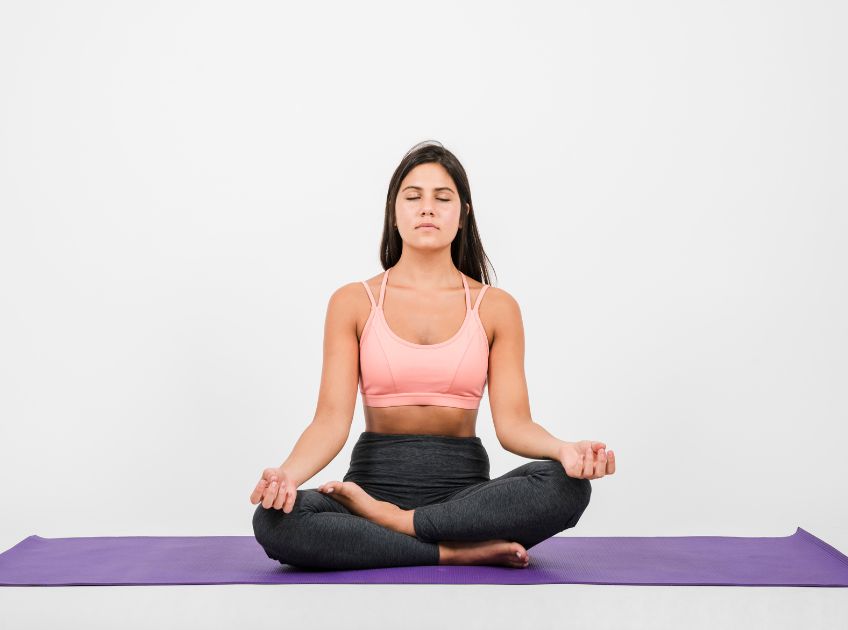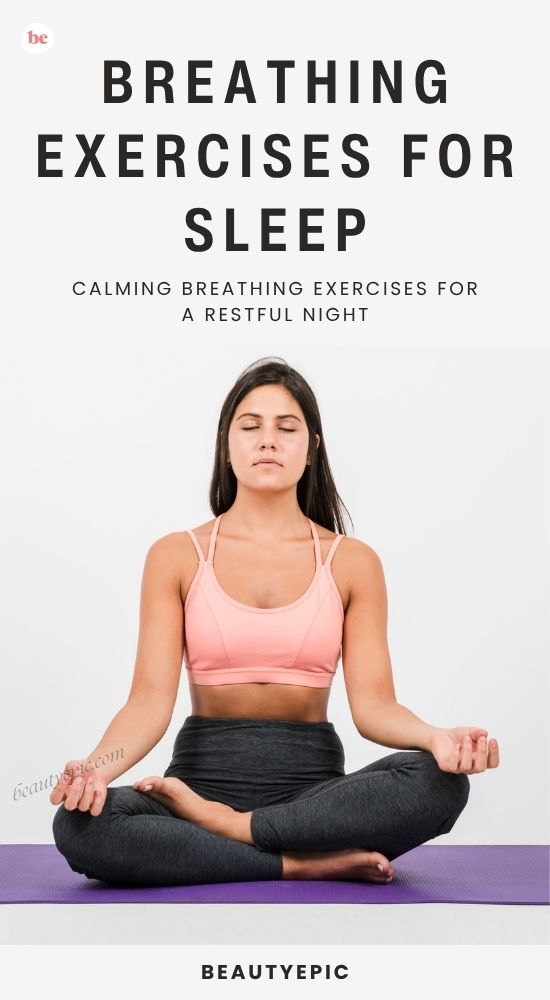
Important: This article is for informational purposes only. Please read our full disclaimer for more details.
Struggling to fall asleep or stay asleep is a common issue in today’s fast-paced world. Stress, anxiety, and irregular sleep schedules often keep the mind too active for rest. One simple yet highly effective solution lies in your breath. Controlled breathing can calm the nervous system, lower heart rate, and signal to the brain that it’s time to relax.
Breathing exercises for sleep are not just a wellness trend—scientific studies show that slow, mindful breathing activates the parasympathetic nervous system, also known as the “rest and digest” mode, which helps the body prepare for deep, restorative sleep.
Before You Begin: Setting the Stage for Relaxation
For breathing exercises to work effectively, your environment matters. Here are a few things to keep in mind:
- Find a quiet space: Dim the lights, silence notifications, and reduce distractions.
- Get comfortable: Lie down on your bed or sit with your back supported.
- Breathe naturally first: Spend a minute observing your breath before starting.
- Consistency is key: Practice nightly to train your body and mind for better sleep.
7 Calming Breathing Exercises for a Restful Night
1. The 4-7-8 Technique
Often called a “natural tranquilizer for the nervous system,” this method is simple yet powerful.
- How to Do It
- Sit or lie down in a comfortable position.
- Place the tip of your tongue just behind your upper front teeth and keep it there throughout.
- Inhale quietly through your nose for a count of 4.
- Hold your breath for a count of 7.
- Exhale completely through your mouth for a count of 8, making a gentle “whoosh” sound.
- Repeat 4–6 cycles.
- Best For: People with anxiety, racing thoughts, or insomnia.
- Why It Works: Holding the breath increases oxygen circulation, while the long exhalation activates the parasympathetic nervous system, helping the body “switch off.”
2. Box Breathing (Square Breathing)
A grounding technique used by athletes and military professionals to remain calm under stress.
- How to Do It
- Inhale deeply through your nose for 4 counts.
- Hold your breath for 4 counts.
- Exhale gently for 4 counts.
- Hold again for 4 counts before the next inhale.
- Imagine tracing a square with your breath—inhale (side 1), hold (side 2), exhale (side 3), hold (side 4).
- Best For: Overthinking at bedtime, stress-related sleep disturbances.
- Why It Works: Creates a rhythm that balances oxygen and carbon dioxide in the blood, calming the nervous system.
3. Diaphragmatic (Belly) Breathing
This is one of the simplest yet most effective methods to relax both mind and body.
- How to Do It
- Lie flat on your back with your knees bent or sit upright in bed.
- Place one hand on your chest and the other on your belly.
- Inhale slowly through your nose, allowing your belly (not chest) to rise.
- Exhale through pursed lips, letting the belly fall.
- Continue for 5–10 minutes.
- Best For: Beginners, people with shallow breathing, or those with stress-related tension.
- Why It Works: Engages the diaphragm fully, promotes oxygen exchange, and reduces levels of stress hormones like cortisol.
4. Alternate Nostril Breathing (Nadi Shodhana)
An ancient yoga technique designed to balance energy channels and calm the mind.
- How to Do It
- Sit comfortably with your spine straight.
- Place your right thumb over your right nostril.
- Inhale slowly through your left nostril.
- Close your left nostril with your ring finger, release the right nostril, and exhale.
- Inhale through the right nostril, then switch and exhale through the left.
- Repeat for 5–10 minutes.
- Best For: People experiencing stress, mental clutter, or pre-sleep restlessness.
- Why It Works: Balances the left and right hemispheres of the brain, reduces anxiety, and promotes a centered, peaceful state.
5. Bhramari (Humming Bee Breath)
This soothing practice uses sound vibrations to create inner calm.
- How to Do It:
- Sit in a comfortable position with eyes closed.
- Inhale deeply through your nose.
- Exhale slowly while making a humming sound, like a gentle bee buzz.
- Keep your focus on the vibrations in your head and chest.
- Repeat 6–8 rounds.
- Best For: People who struggle with anxiety, overthinking, or migraines before bed.
- Why It Works: The humming sound activates the vagus nerve, calming the nervous system and releasing built-up stress.
6. Resonance Breathing (Coherent Breathing)
A scientifically validated method to synchronize your breath and heartbeat.
- How to Do It
- Inhale gently for about 5.5–6 seconds.
- Exhale for the same duration (5.5–6 seconds).
- Maintain this rhythm for 10–15 minutes.
- Best For: People seeking a science-backed, simple practice for sleep.
- Why It Works: Creates a state of “coherence” where the heart, lungs, and nervous system function in harmony, reducing anxiety and enhancing sleep quality.
7. Progressive Relaxation with Breathing
A hybrid technique combining breathwork and muscle relaxation.
- How to Do It
- Lie down in bed and close your eyes.
- Inhale deeply while tensing a muscle group (such as your fists, shoulders, or legs).
- Exhale and release the tension completely.
- Move progressively from your feet up to your face.
- Best For: People with body tension, restlessness, or physical discomfort preventing sleep.
- Why It Works: Relieves physical tightness while steady breathing induces mental calm, preparing the body for restorative rest.
What Science Says About Breathing and Sleep
Research confirms that slow, deep breathing positively influences sleep:
A 2018 study in Frontiers in Psychiatry found that paced breathing reduces pre-sleep anxiety and shortens the time it takes to fall asleep (1).
Studies on the 4-7-8 method show its ability to activate the parasympathetic nervous system, lowering heart rate and blood pressure (2).
Coherent breathing has been shown to improve heart rate variability and overall sleep quality (3).
Together, these findings highlight that breathing exercises are a safe, natural, and effective method to improve sleep quality without medication.
Frequently Asked Questions (FAQ’S)
Q1. How long should I practice breathing exercises before bed?
A. Just 5–15 minutes can be effective, but consistency every night is more important than duration.
Q2. Can I combine different techniques in one session?
A. Yes. Many people begin with diaphragmatic breathing, then move to 4-7-8 or humming bee breath for deeper relaxation.
Q3. Are breathing exercises safe for everyone?
A. Generally, yes, but if you have a respiratory condition (like asthma or COPD), consult your doctor before starting new practices.
Breathing exercises are more than relaxation tricks—they’re scientifically backed methods to calm your body and mind, reduce stress, and ease you into sleep. Whether you choose the 4-7-8 method, alternate nostril breathing, or simple belly breathing, the key lies in slowing your breath and practicing consistently.
















